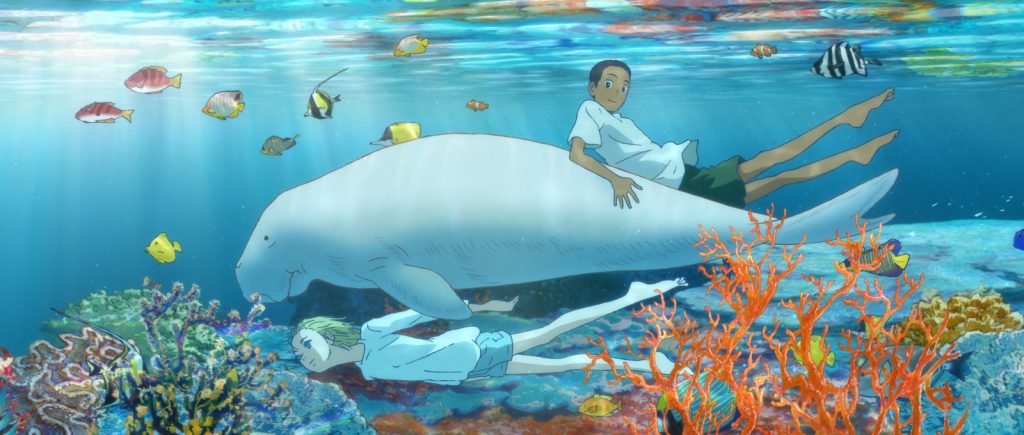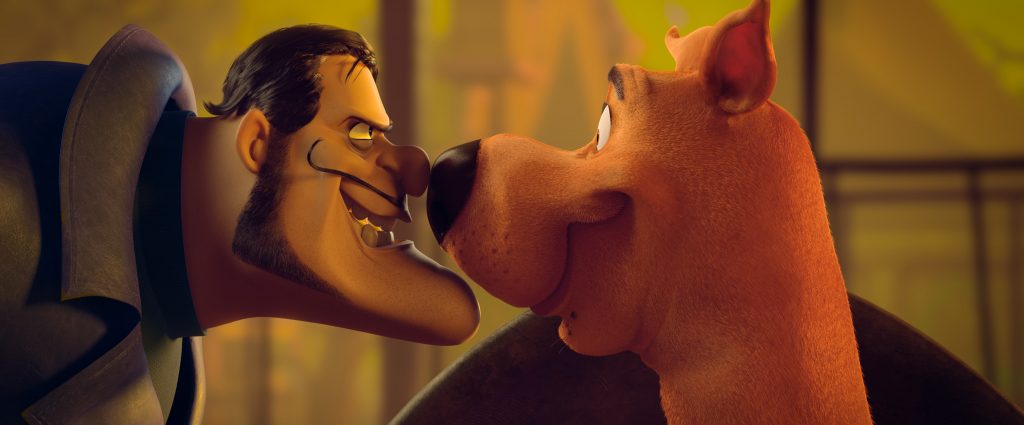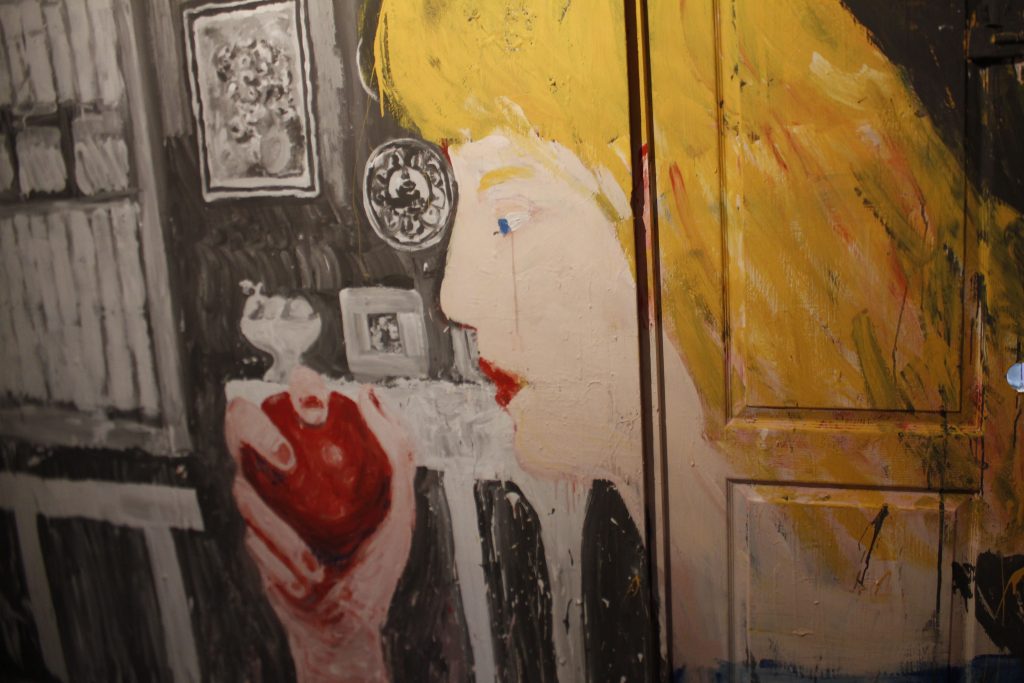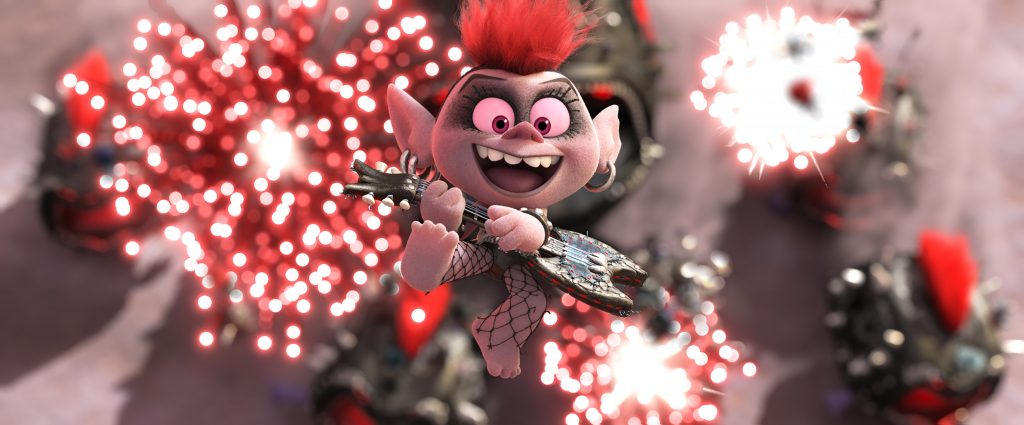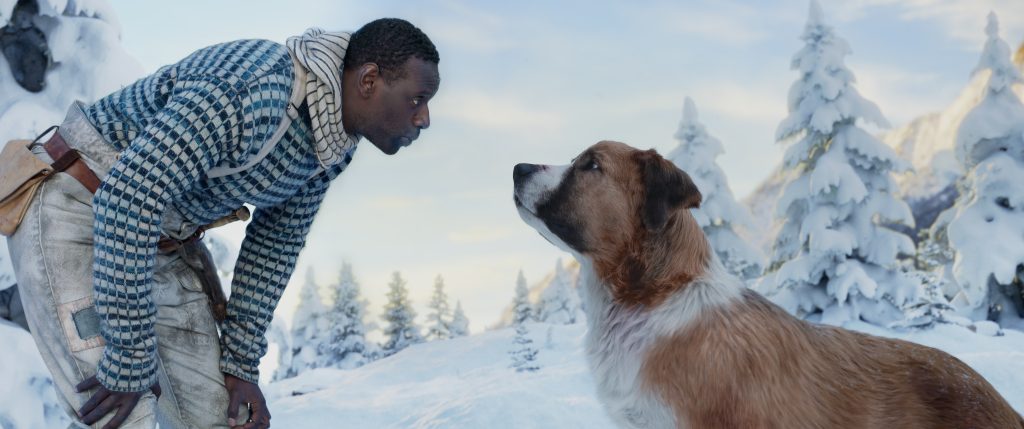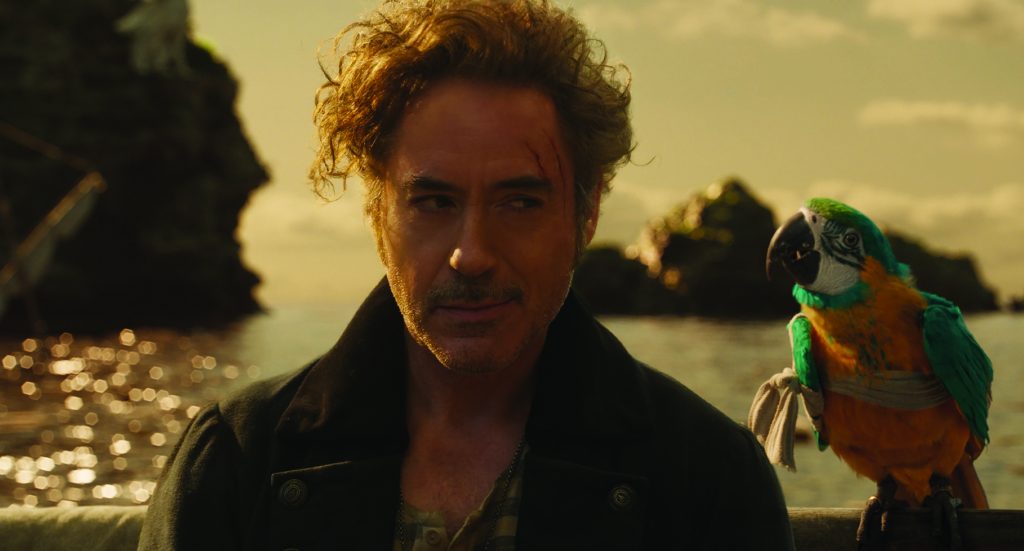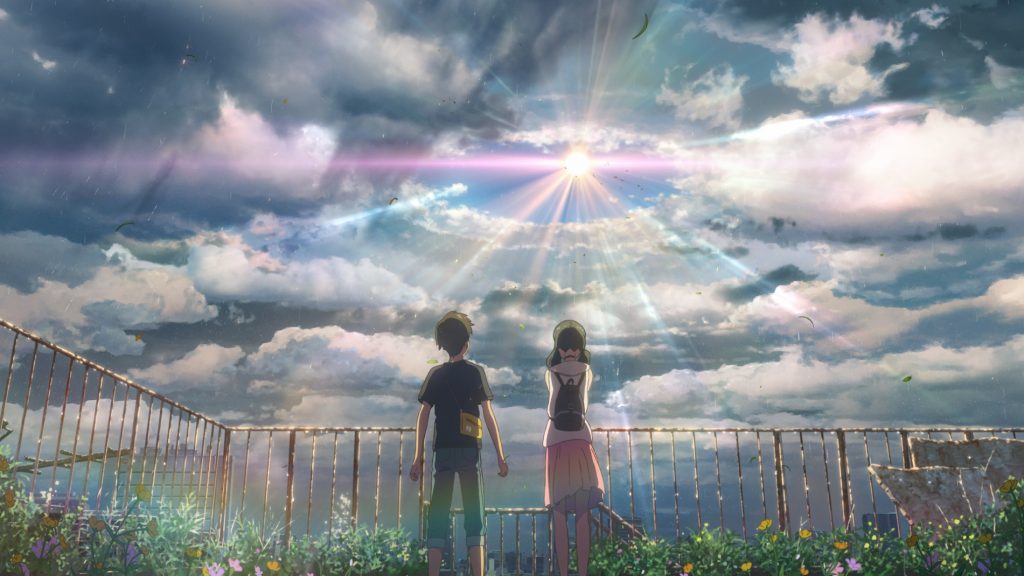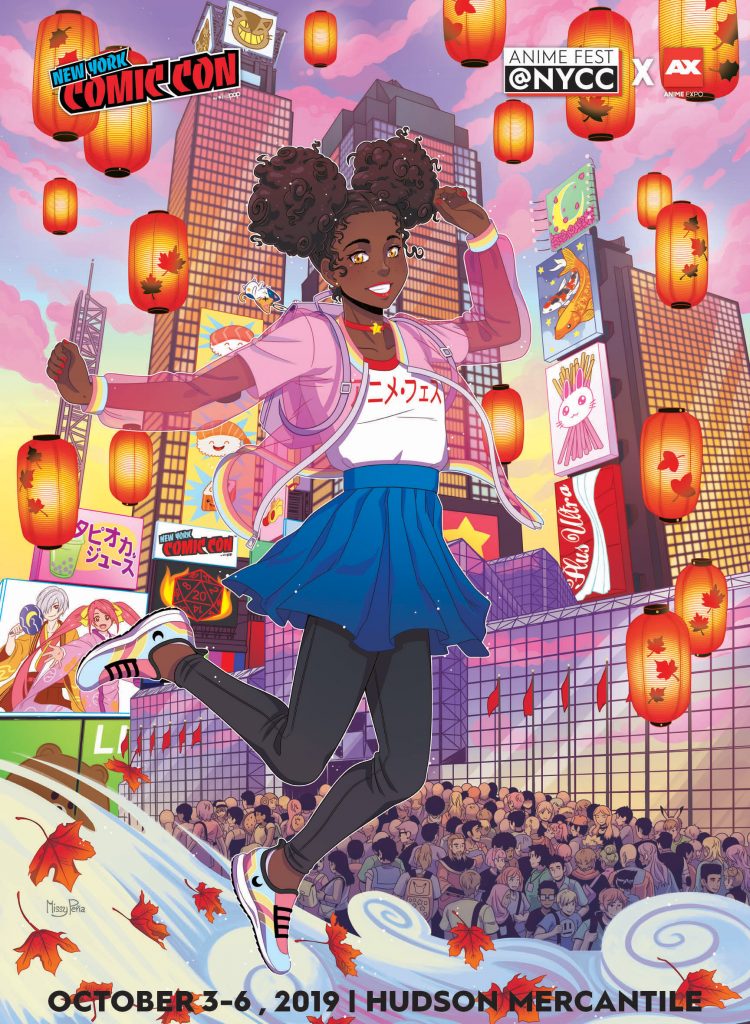September 22, 2020
by Carla Hay
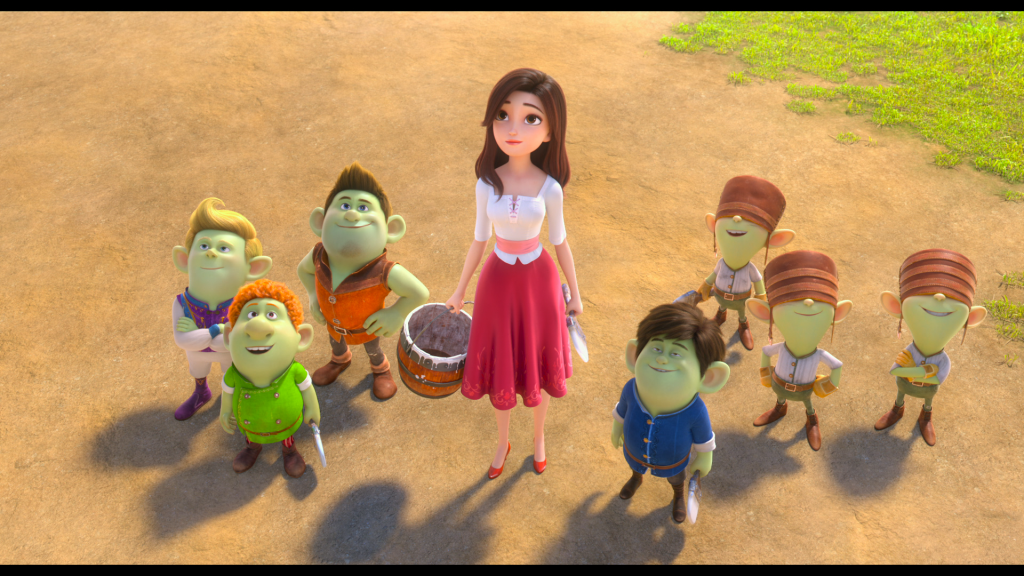
“Red Shoes and the Seven Dwarfs”
Directed by Sung-ho Hong, with co-direction from Moo-Hyun Jang and Young Sik Uhm
Culture Representation: This animated re-imagination of the “Snow White and the Seven Dwarfs” features an all-white cast of characters.
Culture Clash: The Seven Dwarfs are cursed by a spell that has made them into dwarfs, and Snow White’s evil stepmother wants possession of the red shoes worn Snow White, because the shoes can make someone look young and beautiful .
Culture Audience: “Red Shoes and the Seven Dwarfs” will appeal to anyone who’s a fan of the original “Snow White” fairy tale and anyone who’s looking for a mildly entertaining and predictable reimagination of this classic.
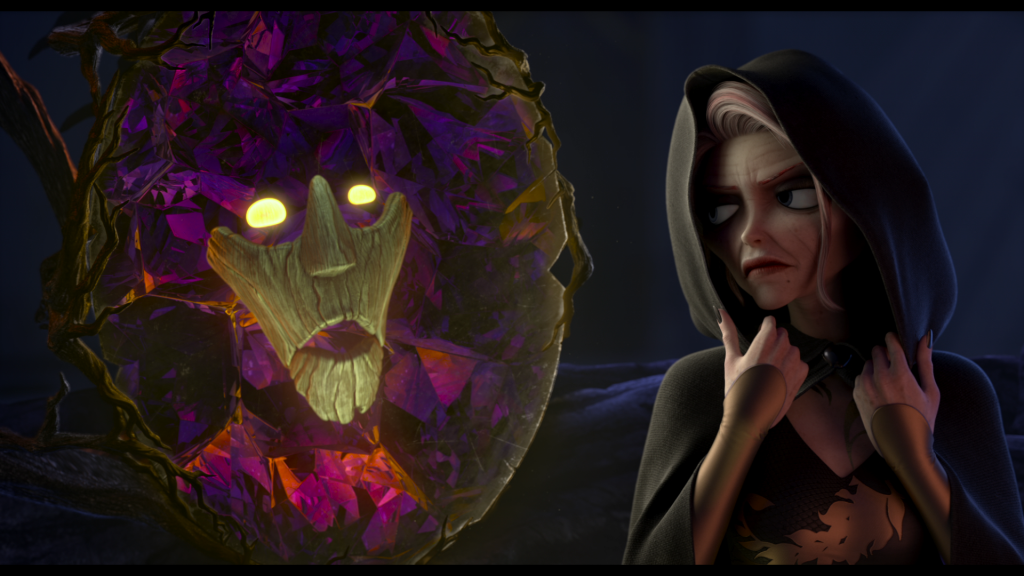
Imagine the classic fairytale “Snow White” reimagined as a story about the importance of judging people for who they are rather than for their physical appearances. It’s this positive message that uplifts the lightweight and mostly enjoyable animated “Red Shoes and the Seven Dwarfs,” which can be entertaining to watch for people of any generation. The story will be completely predictable to adults, but the appealing animation and the briskly paced adventure aspects of the story (the movie is 92 minutes long) should keep most viewers interested from beginning to end.
Written and directed by Sung-ho Hong (and co-directed by Moo-Hyun Jang and Young Sik Uhm), “Red Shoes and the Seven Dwarfs” begins with a twist on the origin story of the Seven Dwarfs. It’s explained that they used to be tall, good looking young men who were members of a heroic group known as the Fearless Seven. They are described as “the greatest heroes of Fairy Tale Island.”
However, one day the Fearless Seven made the mistake of attacking a fairy princess who looked like a witch, so she cursed them by turning them into green dwarfs. The only way to break this curse is for them to get a kiss from the most beautiful girl in the world. Feminists might cringe at this aspect of the story, but if you’re easily offended by stories that have old-fashioned ideas of the roles of males and females, then avoid fairy tales altogether.
The Seven Dwarfs (formerly known as the Fearless Seven) have become outcasts in society and their only mission now is to find the most beautiful girl in the world. As far as the world is concerned, the Fearless Seven have disappeared and have been missing for more than a year by the time that the Seven Dwarfs meet Snow White. The Seven Dwarfs are so ashamed of how they look that they deny that they are the Fearless Seven if anyone suspects that they are.
The Seven Dwarfs are Merlin, the group’s friendly leader (voiced by Sam Claflin); Arthur (voiced by Simon Kassianides), the often-impulsive warrior who tries to pull his Excalibur sword out of a stone; Jack (voiced by Frederik Hamel), a finicky Frenchman; Hans (voiced by Nolan North), a gung-ho German; and triplets Pino, Noki and Kio (voiced by Frank Todero), who are relegated to sidekick roles with personalities that can’t be distinguished from one another.
Meanwhile, an evil witch named Regina (voiced by Gina Gershon) has a pair of high-heled red shoes that have the power to make the person wearing them look young, thin and conventionally beautiful. These shoes are her most-prized possession because wearing the shoes can changes Regina’s appearance from a mean-looking old hag (her real physical appearance) to someone whose physical appearance is in keeping with conventional standards of beauty.
Snow White (voiced by Chloë Grace Moretz) is a princess who lives with her widower father, the king of the land. The major difference between this Snow White and other versions of Snow White is that this Snow White happens to be plus-sized and self-conscious about her looks. However, her father accepts and loves her for exactly who she is. At the beginning of the story, Snow White has just turned 18 and is set to inherit adult royal duties.
And it’s around this time that Regina shows up in town with a strange mirror, and people in the town start mysteriously disappearing. Regina, who has disguised herself as a beautiful young woman (thanks to wearing the red shoes), has found a way to charm the king and get him to marry her, but the king disappears not long after the marriage. Snow White finds the magical red shoes, turns into a thin and conventional pretty young woman, and flies away on a broom to look for her father. An enraged Regina then does what she can in her royal stepmother power to find Snow White and the red shoes.
During Snow White’s quest to find her father, she encounters the Seven Dwarfs. They think she could be the most beautiful girl in the world. Therefore, much of the movie revolves around the Seven Dwarfs trying to find out if Snow White is the one who can break their curse. Meanwhile, because she has other people do the dirty work for her, she is seen back at the castle with her talking Magic Mirror (voiced by Patrick Warburton), which gives her advice on what to do next.
Snow White has been declared a fugitive thief, so when she meets the Seven Dwarfs, she lies and tells them her name is Red Shoes. She wants them to help her find her father, but they don’t want to admit that they’re the heroic group called the Fearless Seven. However, they all have to dodge people who are out to get Snow White, since there’s a reward for anyone who can capture her.
There’s kind of a cringeworthy scene were Arthur awkwardly tries to kiss Snow White/Red Shoes, but she’s resistant because she’s not attracted to him at all. And it should come as no surprise to people looking for a fairy tale romance in this story that Snow White falls for another dwarf in the group. It’s very easy to guess who it is. The movie plays around a lot with the idea of whether or not this budding romance will survive if Snow White and her would-be beau have their true physical selves revealed to each other.
There’s also a subplot of a spoiled royal named Prince Average (voiced by Jim Rash), who is throwing a birthday party for himself, and he’s obsessed with getting “beautiful people” to attend his party. What he wants most is for a beautiful princess to be his date for the party, so he sends his minions to go out and find one and bring her back to him. It’s really not all that much different from real life, when rich people hire supermodels to be at their parties.
In fact, some parts of “Red Shoes” have some underlying sly commentary about how shallow people can become so obsessed with youth and beauty that it can turn them into soulless people who lose sight of what really matters in life. This isn’t a movie that needs to be over-analyzed, but there is an interesting metaphor that can be found between the Magic Mirror and what’s going with a lot of people who over-use Instagram and other social media for ego validation. “Red Shoes and the Seven Dwarfs” essentially has the message that people who put a fake image of themselves out there the world so that they can be rewarded for it in some way end up doing the most damage to themselves.
In an animation world where movies from Pixar, Disney Animation and DreamWorks Animation get most of the major awards and blockbuster sales, “Red Shoes and the Seven Dwarfs” (from Locus Animation Studio) isn’t going to make a dent in that domination. However, the animation and other visuals in “Red Shoes” are very good for a movie that has the fraction of the budget that a movie from Pixar, Disney Animation or DreamWorks Animation would have.
If “Red Shoes and the Seven Dwarfs” looks and sounds very influenced by Disney, that might be because the movie’s character design and animation direction are by Jin Kim, whose credits include the Disney animated films “Fantasia 2000,” “Frozen II” and “Tangled.” Also complementing the film well is the musical score by Geoff Zanelli, whose movies credits include the Disney live-action films “Maleficent: Mistress of Evil” and “Pirates of the Caribbean: Dead Men Tell No Tales.” However, there are elements of “Red Shoes and the Seven Dwarves” that are also influenced by a film from a Disney rival: DreamWorks Animation’s first “Shrek” movie.
The subplot with Prince Average makes the story a little cluttered at times, but the movie doesn’t drag too much and there’s enough humor in it so that it doesn’t seem to take itself too seriously. And as is the case with many reimagined fairy tales that have been updated with modern sensibilities, this Snow White is definitely not a damsel in distress who needs to be rescued by a prince at the end of the story.
Disney’s 1937 animated film “Snow White and the Seven Dwarfs” stuck to the fairy tale that had traditional gender roles in who does the rescuing. The overall message of “Red Shoes and the Seven Dwarfs” has a more impactful message about how true love can be found if it isn’t based solely on how someone looks and if you have self-acceptance first.
Lionsgate released “Red Shoes and the Seven Dwarfs” on digital and VOD on September 18, 2020, and on Blu-ray and DVD and September 22, 2020.


